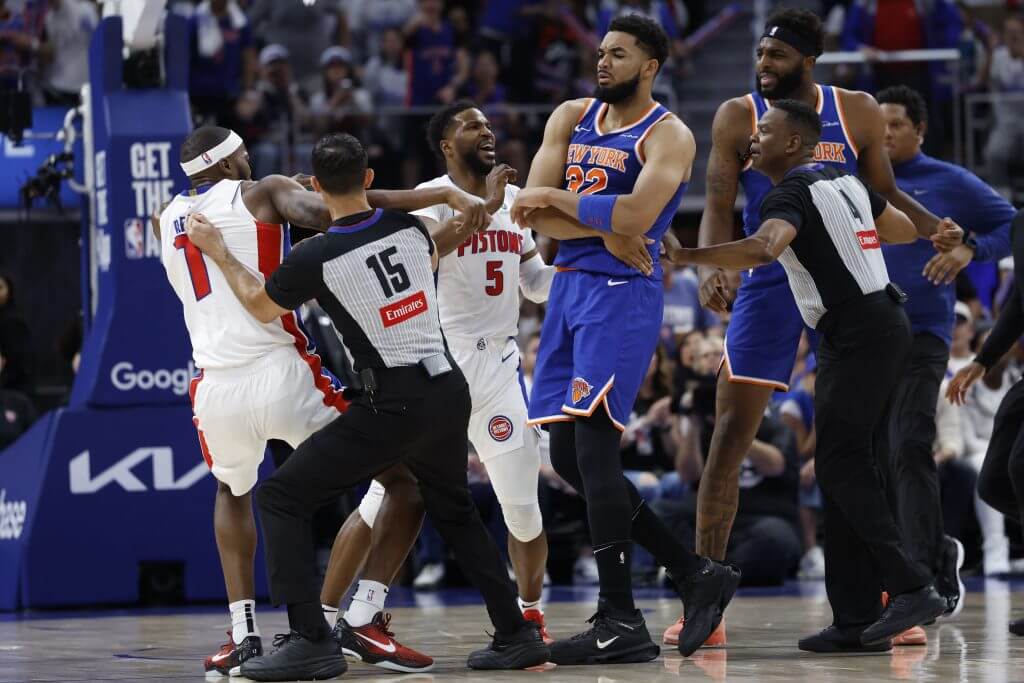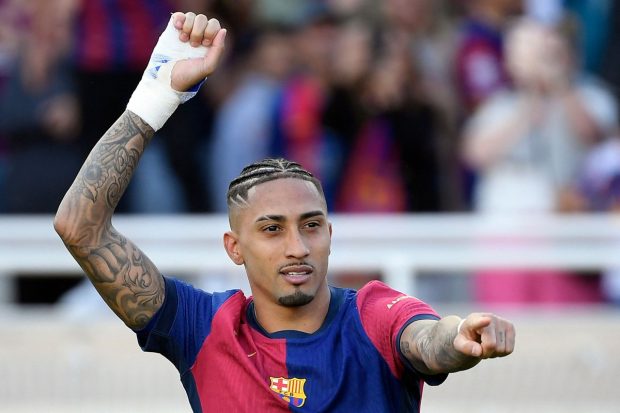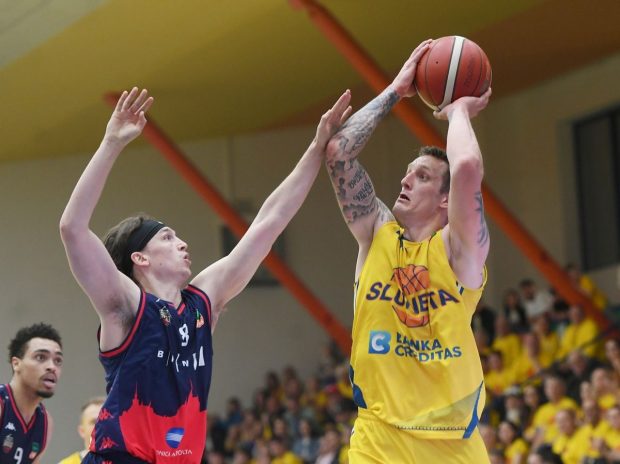
The NBA’s top defensive team has a higher gear. And playoff bullies are back.
Let’s run through a couple of trends that have caught my eye during the NBA postseason:
A new gear
The Oklahoma City Thunder have invented seventh gear.
They snapped the spines of the Memphis Grizzlies on Thursday night, storming back from down 29 points to take a 3-0 series lead. And they did it with a duo they don’t often pair. Once Alex Caruso and Lu Dort entered, the game unraveled into a Mark Daigneault fever dream.
Advertisement
During the regular season, Caruso and Dort would typically overlap for a few minutes per half, but for the most part, Daigneault staggered the two. That ensured the Thunder, who have owned the NBA’s top defense all season no matter how you measure it, had at least one elite point-of-attack defender on the court at all times. But from the start of Game 3’s fourth quarter, Daigneault played his two best perimeter defenders together.
The Grizzlies, who lost Ja Morant to a hip injury late in the second quarter, were helpless.
Dort finished fourth in Defensive Player of the Year voting. Caruso, if he were eligible, would have likely earned defensive accolades this season. For all the deserved talk Atlanta Hawks stopper Dyson Daniels received for knocking away passes, Caruso was the one guy who averaged more deflections per minute than Daniels did during the regular season.
The Thunder are the only team in the league with the personnel to pull this off while also leaving All-Defense-caliber players on the bench. The Grizzlies were paralyzed during the 10 minutes Caruso and Dort shared during the fourth quarter.
Here is Dort giving Desmond Bane no space on a pick-and-roll, which forced the Grizzlies’ shooting guard, their best option on the perimeter after Morant got hurt, to swing a pass to the opposite side, where there should be a mismatch, based purely on aesthetics. Caruso was taking on probable All-NBA big man Jaren Jackson Jr., who has five inches and nearly 60 pounds on him.
Caruso did not just happen to be switched onto Jackson during this possession. He guarded him from the onset of the quarter and then later in the fourth. And he continued to pester the All-Star.
The play below occurred only a minute after the one above. Jackson drove left against Caruso. Dort dug into the lane to disrupt him, which caused a wonky shot. Caruso finished it off, smacking the ball out of Jackson’s hands on the board and diving to the floor for possession.
Dort once marveled to me over the strength of Caruso’s wrists — how they don’t bend when the guard swipes for steals. This is the perfect example.
All the while, Dort glued himself to Bane, who did not make a shot in the fourth. He went 3 for 11 with four turnovers after Morant’s injury, when he was subjected to the most attention from the Thunder’s defensive aces.
The Grizzlies scored only 31 points in the second half of Game 3, and Morant’s injury wasn’t solely to blame for the collapse, nor was unacceptable play. When the league’s most suffocating group reaches levels it hasn’t before, what’s a hampered offense to do?
Advertisement
The play below is actually a well-executed one from Memphis, which has the ball down only three points with under a minute to go. But look at the communication between the Thunder, which allows them to pull off constant switches and still recover to their men. Then check out the contest at the rim from MVP candidate Shai Gilgeous-Alexander, one of the league’s top shot-contesting guards. And finally, peep at Caruso covering ground like he’s Ed Reed.
The Thunder’s greatest strength is their shapeshifting. If they want to go big, they can play Chet Holmgren (who dominated the second half of Game 3) alongside Isaiah Hartenstein and remain elite. If they want to go small, they can use only one of the big men or stick Jalen Williams on a center. If they want to blitz pick-and-rolls, they have the speed and instincts to do so without being reckless. If they want to switch, they are loaded with versatile defenders.
On Thursday, the Thunder paired two of the few best on-ball defenders in the league. For parts of the period, Cason Wallace, whom I dubbed All-Perimeter-Defense Second Team, was alongside them, as was Williams, another name on the All-Perimeter-Defense list.
No one breaks spirits like the Thunder.
Playoff bullies are back
This is not the same sport that we saw for 82 regular-season games. It is not even the same one the league proudly showed off during last spring’s postseason.
NBA arenas are one Vanilla Ice track away from a spot-on impression of 1990. Maybe defenders will get called for hacks they could have pulled off three decades ago, but penalties are not stopping aggression.
Beefs are beginning to form in most series. The Houston Rockets and Golden State Warriors are in a wrestling match that occasionally breaks for a basketball game. Memphis could place an actual grizzly bear on the court, and Dort might be antsy enough to torpedo into it. Kristaps Porziņģis is shooting free throws with blood dripping down his scalp. Paul Reed and Mitchell Robinson went at it, which led to a shove from Karl-Anthony Towns (and a textbook pass block from referee Zach Zarba, who must moonlight as a fullback) in Game 3 of Knicks-Pistons.

Thursday’s Knicks-Pistons scuffle is just one example of the physicality on display in these playoffs. (Rick Osentoski / Imagn Images)
These playoffs are not about offense or defense winning championships, but they are about physicality on both sides of the ball winning out.
The league is rougher than it has been in years. Just look at how many players are hitting the ground, further proof that this is not the same sport as the one the same teams play during the regular season.
Advertisement
During the regular season, Philadelphia 76ers players fell to the ground throughout a game 16.9 times, which led the NBA, according to Second Spectrum. But during the last week, topping the Sixers’ clumsiness is nothing.
Nine playoff teams are averaging more falls than the Sixers did. No surprise, in a series filled to the brim with flopping allegations and box-out shenanigans, the Pistons and Knicks both tread around the same number: 26.0 and 25.7 falls per game, respectively, Nos. 1 and 2 in the playoffs. The Indiana Pacers are falling 25.5 times a game against the Milwaukee Bucks. The Warriors and Rockets are each a little above 25, as well.
As is expected this time of year, players are racing after 50-50 balls like they didn’t when games mattered less. The Knicks are hitting the ground for 5.5 loose balls a game against the Pistons. They averaged 1.5 during the regular season. The Pistons have sprawled out for 4.0 loose balls a game after doing so 1.9 times a game, which was second in the NBA, during the first 82.
Defenders are getting knocked to the floor about twice as often while defending the ball. Three teams have already dizzied to 30 falls in a game, making the renowned 30-fall game, the type we’ve all heard about since childhood, 24 times more likely in the playoffs than it was during the regular season.
Everyone is knocking everyone on their romper.
(Top photo of Alex Caruso, Lu Dort and Desmond Bane: Petre Thomas / Imagn Images)
This news was originally published on this post .










Be the first to leave a comment